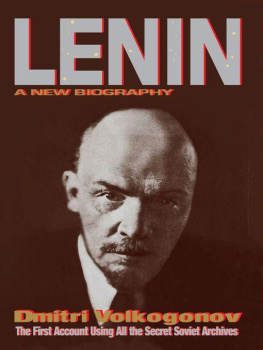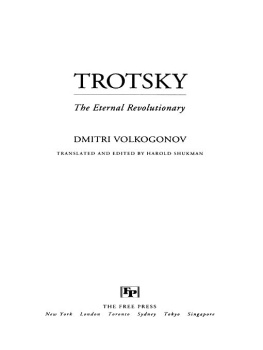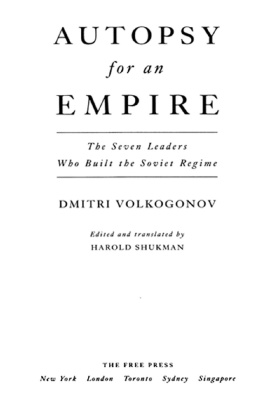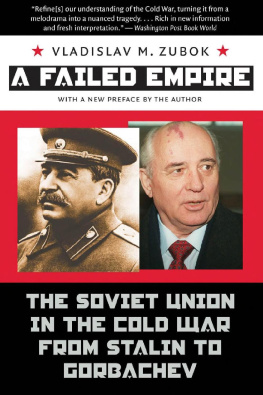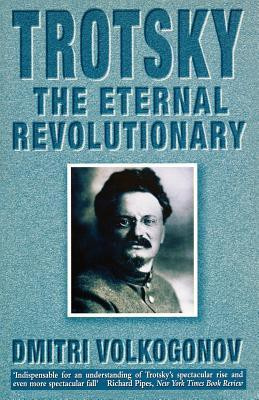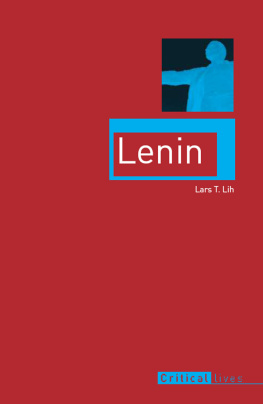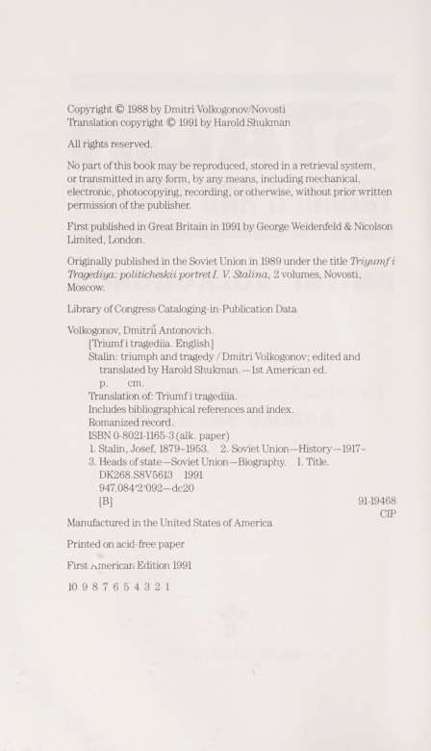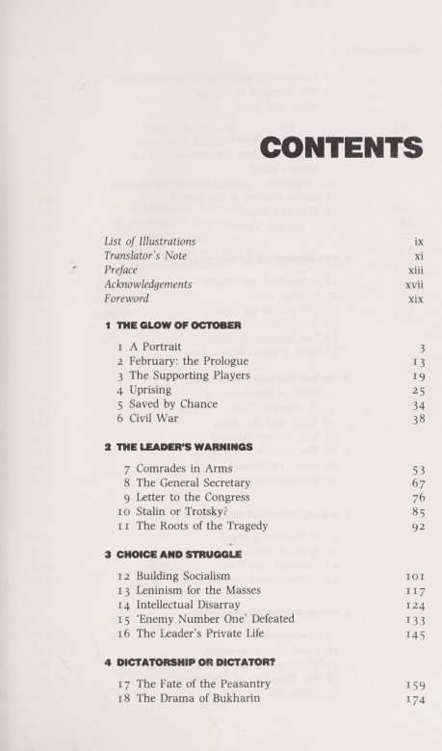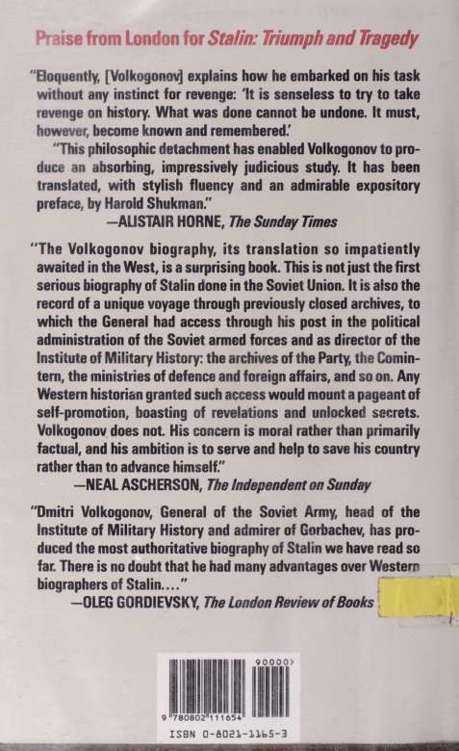This book made available by the Internet Archive.
vl Contents
19 Dictatorship and Democracy 185
20 The Congress of Victors 193
21 Stalin and Kirov 201
5 THE LEADERS MANTLE
22 A Commanding Personality 217
23 Stalins Mind 225
24 Caesarism 237
25 In the Shadow of the Leader 243
26 Trotskys Ghost 254
27 A Popular Victor 263
6 THE EPICENTRE OF THE TRAGEDY
28 Enemies of the People 275
29 Political Farce 290
30 The Cadres on Trial 305
31 The Tukhachevsky Plot 316
32 The Stalinist Monster 330
33 Guilt Without Forgiveness 336
7 ON THE THRESHOLD OF WAR
34 Political Manoeuvring 343
35 A Dramatic Turn of Events 355
36 Stalin and the Army 367
37 The Defence Arsenal 372
38 The Murder of the Exile 378
39 Secret Diplomacy 384
40 Fatal Omissions 393
8 A CATASTROPHIC BEGINNING
41 A Paralysing Shock 405
42 A Cruel Time 4!5
43 Disasters and Hopes 4 2 5
44 Captivity and General Vlasov 438
9 THE SUPREME COMMANDER
45 Headquarters 45 1
46 Dawn Over Stalingrad 458
47 The Commander and his Generals 464
48 The Thoughts of a Strategist 473
49 Stalin and the Allies 483
Contents vii
10 THE CLIMAX OF THE CULT
50 Victory at a Price 497
51 A Shroud of Secrets 509
52 A Spasm of Violence 517
53 The Ageing Leader 525
54 Icy Winds 530
11 THE RELICS OF STALINISM
55 A Historical Anomaly 545
56 Mummified Dogmas 552
57 Absolute Bureaucracy 557
58 Earthly Gods are Mortal 567
59 Defeat by History 577
Chronology 582
Notes 591
Illustrations
Between pp. 260-261
Iosif Dzhugashvili, 1893 (Novosti)
Yekaterina Svanidze (Novosti)
Exiled Central Committee members in Monastyrskoe, 1915 (Novosti)
Yegorov and Stalin, 1920 (Novosti)
Trotsky, 1918 (Novosti)
War Communism: collecting the harvest (Novosti)
Unloading requisitioned food in Moscow, 1919 (Novosti)
Famine in the Volga region, 1921 (Novosti)
Lenin and Stalin, 1922 (Novosti)
Stalin, Rykov, Kamenev and Zinoviev, early 1920s (Novosti)
May Day 1925, Red Square (Novosti)
Stalin, Ordzhonikidze, Kalinin and Voroshilov at a collective farm (Weidenfeld and Nicolson Archive)
A womans lot: Magnitogorsk, 1931 (Novosti)
Stalin, Kirov and Mikoyan, 1932 (Novosti)
Pravda, 7 November 1930 (Novosti)
Trial of a kulak, 1932 (Novosti)
Kulak victims of terror, 1929 (Novosti)
Stalin with Poskrebyshev, 1934 (Novosti)
Voroshilov with future victims of the terror (Novosti)
Voroshilov, Molotov, Stalin and Yezhov at the Moscow-Volga Canal (Novosti) The same photograph with Yezhov removed (Novosti)
Bukharin in 1920 (Harold Shukman)
Voroshilov, Stalin and Molotov bearing the ashes of balloonists killed in an accident, late 1930s (Novosti)
Stalin in Buryat Mongol costume, 1936 (Novosti)
Stalinist elections, 1937 (Novosti)
The platform at a session of the Moscow Soviet, 1935 (Novosti)
Stalin with his daughter Svetlana (Novosti)
Stalin with his mother, 1935 (Novosti)
Stalin and Voroshilov with their wives (Novosti)
Stalin and Beria with Svetlana (Novosti)
x Illustrations
Stalin with Vasili and Svetlana (Novosti)
Stalin and Beria on holiday (Novosti)
Stalin at his dacha (Novosti)
Cases being checked on arrival at a labour camp (Novosti)
Prisoners entering a quarantine unit (Novosti)
Signing of the Soviet-German Non-Aggression Pact, August 1939 (Harold Shukman)
Stalin with Poskrebyshev (Harold Shukman)
Stalin after the signing (Harold Shukman)
Map of Poland signed by Stalin and Ribbentrop (Novosti)
Western Belorussians receiving the news of annexation (Novosti)
Soviet warplanes destroyed, July 1941 (Novosti)
Report from Timoshenko to Stalin (Novosti)
Shooting at enemy planes, May 1942 (Novosti)
Soviet POWs, autumn 1941 (Weidenfeld and Nicolson Archive)
Yakov Dzhugashvili and G. Skryabin as prisoners of war (Novosti)
A German camp for Soviet POWs, 1941 (Novosti)
Cavalry attack outside Moscow, December 1941 (Weidenfeld and Nicolson Archive) The village of Khoroshevo (Novosti)
POWs reaching Moscow, July 1944 (Novosti)
The liberators on foot to Berlin (Novosti)
Stalin with his children Vasili and Svetlana, 1947 (Novosti)
Pre-election meeting, 15 February 1950 (Novosti)
Moscow Pioneers bring flowers to Stalin (Novosti)
The interment (Novosti)
Translators Note
It is virtually impossible to transliterate all Russian names consistently, except by means of a variety of specialized annotations which would require their own glossary. It seems pedantic to insist on Aleksandr or Trotskii (or Trockij or Trotskiyfwhen Alexander and Trotsky are readily recognizable. Bibliographical references, however, whether within the body of the text or in the end notes, appear as they are commonly found in library catalogues, in order to ensure proper identification. The subject of this book presents a different problem of transliteration. The English form of Stalins first name is Joseph, and Joseph Stalin is customary. Since, however, he is frequently mentioned or addressed here in the full Russian form of first name and patronymic, it was felt that Joseph Vissarionovich was odd, and that Iosif Vissarionovich had the merit of greater accuracy and also that it conformed more closely to the initials I.V. with which he often signed papers. We have therefore settled on Iosif.
Professional revolutionaries commonly adopted aliases, or party nicknames, usually when first signing an illegal publication or following their first arrest and interrogation by the Tsarist secret police. Thus, Vladimir Ulyanov adopted the name Lenin, derived from the name of the river Lena in Siberia where he was exiled, while Leon Bronshtein took the name of one of his prison warders and became Trotsky. Some appear to have adopted names to create an image: e.g. Vyacheslav Skyrabin became Molotov, or the Hammer, while Lev Rozenfeld became Kamenev, or man of stone, and Iosif Dzhugashvili chose Stalin, or man of steel. Others simply sought anonymity in ordinary Russian names, while Jews, who were disproportionately numerous in the movement, found in a Russian pseudonym the added advantage of ethnic anonymity in the face of the anti-Semitic police force. Where appropriate, we have indicated the real or original name.
Next page

